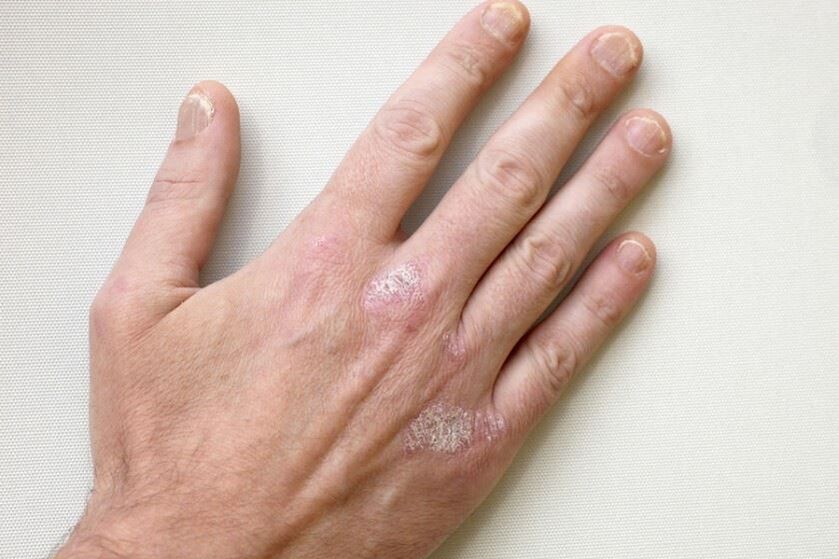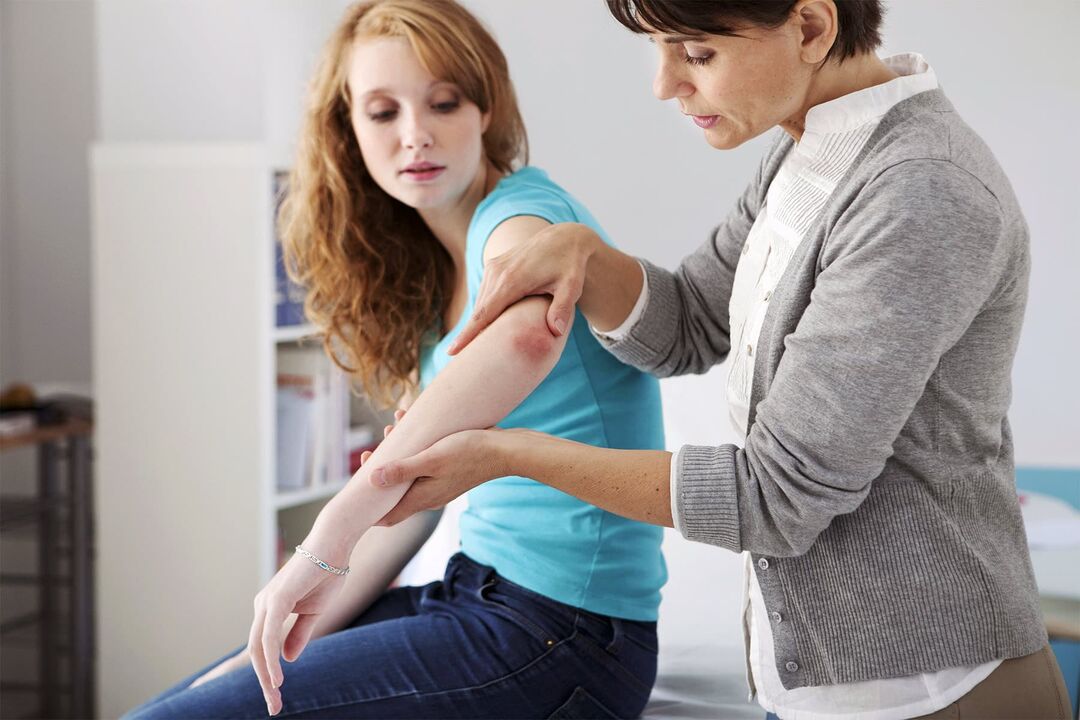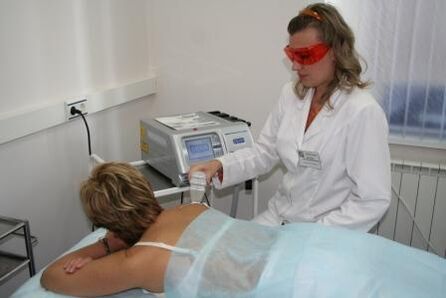What kind of disease is psoriasis and what are its external symptoms?
Additional Information:The peculiarities of this disease have not yet been fully studied, and patients must be prepared for sustained, long-lasting, and long-lasting cures, as well as for periodic exacerbations alternating with phases of remission and remission, lasting from weeks to weeks. Year.
Classification of psoriasis types

According to ICD-10
- Ordinary or plaque type. Prevalence – 90-95%. Manifestation - papulosquamous structure of gray, white, pink tones. As they grow, entire "islands" and "lakes" of diseased skin can form.
- Generalized pustules or "impetigo", "Tsumbusha" disease, exudative. It starts with blisters and blisters that contain fluid (exudate). After rupture, ulcers and self-infection develop.
- Persistent or allogeneic epidermopathy, Seton's or Crocker's acrodermatosis. Fluid or pustule formation in plaques and papules is sterile and free of extensive self-contamination. Nails and fingers are often affected.
- Palmar and plantar lesions. Small sores on the palms and soles of the feet that are not self-infected. This makes it difficult for patients to achieve quality of life while walking and working with their hands.
- teardrop shape. Purple, pink, gray dots on the body usually begin after severe sore throat, strep throat, pharyngitis, and other contagious viral illnesses.
- Arthropathy appearance. Damage to the joints of fingers, hands, knees, and lower legs. Prevalence – 10% of all psoriasis patients.
- Other, reverse and unspecified. Smooth patches appear in delicate areas of skin with lower rates of exfoliation.
According to clinical parameters
- By location - specify body part;
- Based on clinical picture - nature, texture of psoriasis;
- By stage of progression - disease progression, quiescence, regression;
- based on performance in a given season;
- By area of skin area - less than 20% of the epidermis is affected, more than 20% or the entire skin is affected.
Classified by United States
- Mild skin damage - less than 2%;
- Average severity of transmission – from 2% to 10%;
- Severe stage of skin damage - 10% and above.
According to the PASI index
- PASI indexes exist between 0 and 72 values;
- This index indicates the severity of dermatitis;
- Only experts can calculate this index.

General symptoms
notes!Psoriasis is a disease in which there are always scaly structures above the surface of the affected skin. From Latin for "scale". It means "scaly, " so the diagnosis might be written on a line on the checklist: "Epidermal papulosquamous cell disease. "
Symptoms of psoriasis
- Papules are swellings on the surface of the skin that contain infectious or sterile fluid.
- Plaques are red spots that grow and fester over time.
- The patches can be gray, reddish, yellowish, or purple in spots.
- The texture of the affected skin surface ranges from moist and pustular to dry and scaly.
- Scaling and flaking are characteristic of all types of disease.
- The patient's general condition includes irritability, nervousness, lethargy, fatigue, and apathy.
The stages and extent of psoriasis development
weak stage
- Papules and plaques are rare and isolated;
- No unbearable itching;
- There is no severe swelling yet;
- It often occurs after exposure to stress or a serious infection.
Reinforcement phase
- Defined as Kobner syndrome;
- Sudden lesions appear in different parts of the human body;
- Papules and plaques merge and grow into entire "paraffin lakes";
- Pain and itching are typical symptoms of this period.
worsening of condition
- scale form;
- Dry skin;
- The rash no longer grows;
- scales fall off;
- skin injuries;
- The skin where the plaque is located increases in thickness.
for reference:Remission is a separate phase considered the lull in a pathological condition.
Causes of disease
- Genetic predisposition.
- Weak immune system.
- Recently experienced severe psychological trauma, exposure to infection, virus.
- Side effects of medications.
- Residential climate conditions change dramatically.
- Human allergies.
- Imbalances in the gastrointestinal tract, endocrine, excretory, and cleansing systems.
- Slow metabolism due to a sedentary lifestyle and poor diet, sleep, and wakefulness.
important!Pain can occur even after severe sunburn and continued friction with synthetic clothing fabrics in areas of the body's skin folds. Even excessive consumption of low-quality food (containing high amounts of chemicals, preservatives, food compounds), alcohol, drugs (toxic substances) or tobacco can worsen the condition. This was all recorded through a process of elimination - for example, when a patient restricted bad habits, his condition got better.

Diagnosis of Psoriasis – What is it?
- Histologist - studies the blood cells in this condition;
- Immunologists - determine why the body's resistance to viruses weakens;
- Endocrinologist - if disruption of hormone levels and endocrine system function is suspected;
- Infectious disease specialists – test for the presence of infections or viruses in a person’s body;
- Dietitians will determine appropriate nutrition for patients and other professionals.
- Perform an external examination of the affected skin area.
- Blood tests will show whether the joints are affected by the disease.
- A biopsy can reveal the stage of the disease and verify (diagnose a specific type of disease).
notes!Biopsy is one of the main diagnostic procedures, in which a piece of affected skin is taken for laboratory testing. The results show the level of T lymphocyte proliferation, which cells are strong and which are weak.
Difficulties in life for people with psoriasis
- frustrated;
- feeling of inferiority;
- Difficulties in the social sphere - people often believe that the disease is contagious out of ignorance and stop communicating with the sick person;
- cardiovascular disease - sometimes even heart attack;
- Stress Imbalance – High Blood Pressure;
- Diabetes – Type 2 is especially common;
- You must limit your diet;
- You need to adapt to an active lifestyle, which is extremely difficult when you are mentally depressed;
- Physical discomfort - difficulty getting dressed, bathing, bathing, moving arms, legs, sleeping, etc.
for reference:Remission (the weakening phase of the disease) can last for several years only with effective treatments and the prescription of courses, methods, and methods of treatment.

How to treat psoriasis
traditional method
- Disinfect the affected area to prevent infection yourself.
- Forced relief of the inflammatory process with drugs.
- Plaques need to be addressed, and special medications are prescribed for this purpose.
- The same applies to scales - so that they do not fall off painfully, it is possible to soften them with lotions, use various softening ointments, tinctures, mixtures.
- Doctors prescribe injections and tablets, such as immunosuppressants, which restore the function of the immune system and improve psychophysical conditions.
- They use ultraviolet irradiation, plasma exchange and other methods to purify the blood.
- Health resort treatments with mud and salt water. For example, the resorts at the Dead Sea in Israel. This method is not cheap and takes 28 days, but it is 100% effective.
- Take salt baths and herbal baths.
- Special diet, exercise.
important!The base drug is always an antimetabolite of the group of structural analogues of folic acid, which is given to the body via intramuscular injection.
Traditional medicine for treating psoriasis
additional measures
Additional Information:Sudden dieting is not recommended. Additionally, you should always remember your intestines, which need help from fiber and sunflower oil. Therefore, you can eat sunflower seeds and add various permitted fiber-rich foods to your dishes.
5 preventive measures for people susceptible to psoriasis
- Protect yourself from all kinds of infections, dress warmly, don’t catch cold, and have the most positive attitude towards life.
- Be active, eat, sleep and stay awake regularly.
- Give up any bad habits or hobbies like baking, sweets, which contain a lot of sugar.
- Wear clothes made primarily from natural fiber fabrics.
- All pain relievers or other medications should be taken after consulting a doctor and never self-medicated.
for reference:Slow metabolism not only leads to psoriasis but also obesity, liver disease, kidney disease, heart disease and other dysfunctions. Therefore, reducing carbohydrates in your menu, taking more walks in the fresh air and engaging in physical activity will help anyone stay healthy at all times!























